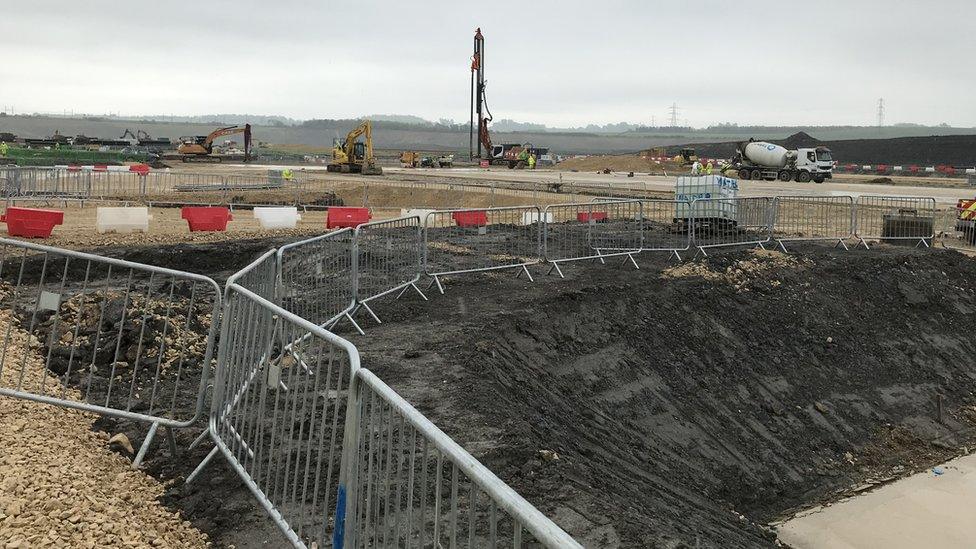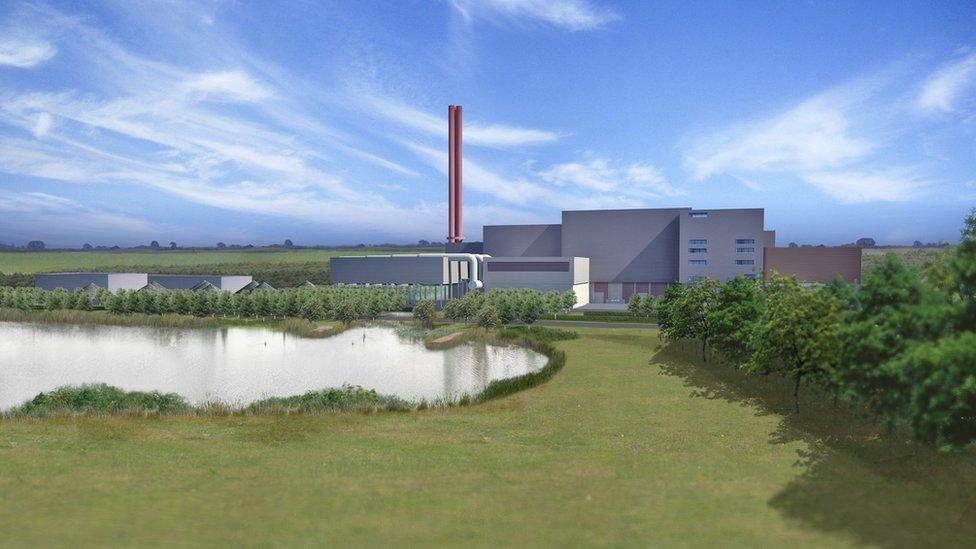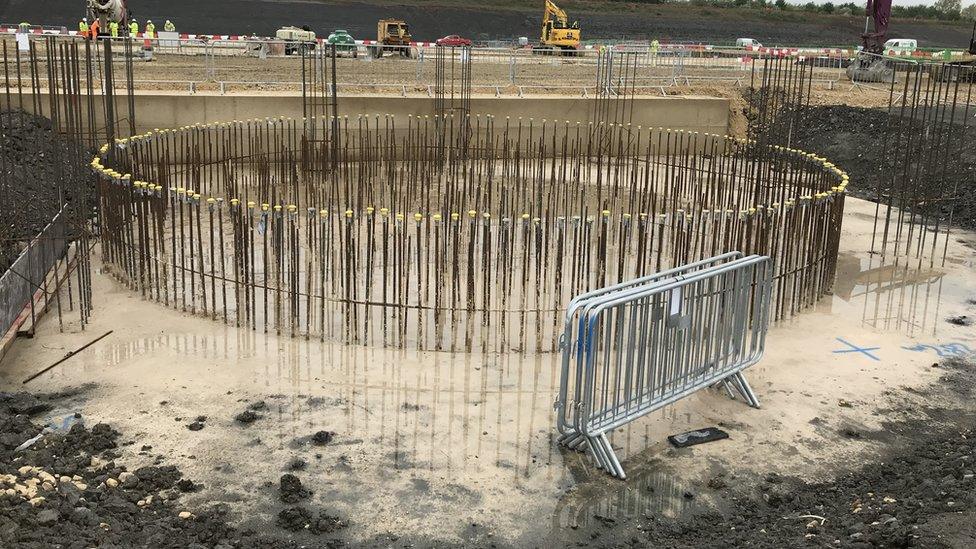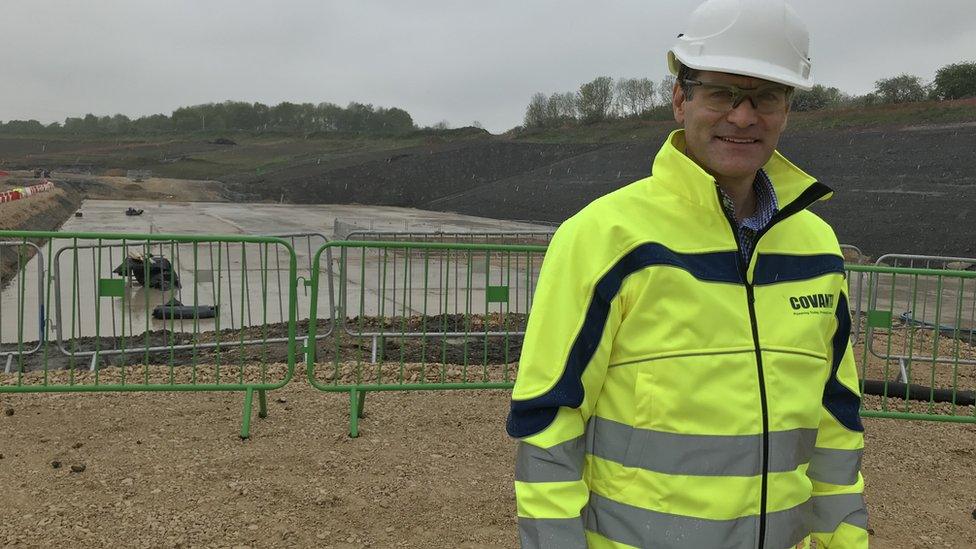Stewartby waste incinerator: Work starts on £450m project
- Published

Construction work on the Rookery South Energy Recovery Facility on a former clay pit has begun
Work has started on a £450m incinerator that will turn waste into energy.
The Covanta Rookery South Energy Recovery Facility in Stewartby, Bedfordshire, could power 112,500 homes a year by 2022.
Campaigners against the project say the plant will release tonnes of CO2 into the atmosphere.
But Tom Koltis, from Covanta, said there needed to be a "mindset change" about the "backwards" view of sending waste to landfill.

The new facility is due to be up and running by March 2022

Piling work has already gone in on the site
The facility is due to run 24 hours a day and convert more than 500,000 tonnes of non-recyclable waste into 60 MWe of electricity a year.
It will create 60,000 tonnes of ash and metal waste a year, which will be recycled or used for aggregates.
The rubbish will be brought in on trucks within a 60-mile (97km) radius.
Campaign group Bedfordshire Against Covanta Incinerator (BACI) said it was still fighting to stop the facility, with its case due at the Court of Appeal in July.

Campaigners are worried about emissions from the plant and the impact hundreds of lorries will have on local roads
It lost a judicial review in November against a permit being issued by the Environment Agency, arguing that "toxic metals" would be discharged into people's drinking water.
Nicola Ryan-Raine, from the group, said she was worried about how the tonnes of waste ash would be taken away from the site.
She added: "For every tonne of waste burned - typically more than one tonne of CO2 is released into the atmosphere."
However, Mr Koltis, the executive director of corporate development, said you either put waste "into the ground or you turn it into electricity".

Tom Koltis, from Covanta, said the job of the company was to "embrace the community"
He said the word "incinerator" had bad connotations, but they were facilities "designed to recover energy and reduce waste volumes".
"The technology is advanced, to the point what is coming out of the stack is less polluting than what is coming out of people's cars and homes," he said.
The facility is scheduled to be up and running by March 2022.

The story so far
In 2007 the site was identified as a potential waste site by the former Bedfordshire County Council
Planning permission for the facility to be built was granted in 2011
Despite opposition from Central Bedfordshire Council and Bedford Borough Council, the go-ahead was given by the government in 2012
The Environment Agency issued a permit for the plant in January 2018
An appeal against the environment permit was dismissed in November 2018


About 120 construction workers are on the site, but that number is expected to increase to an average of 350
Related topics
- Published6 November 2018

- Published27 January 2018

- Published17 December 2012
